- Joined
- Oct 7, 2008
- Messages
- 61,301
- Location
- Bulgaria

Control room of reactor No. 4 at the Chernobyl Nuclear Power Plan

Although radiation levels only allowed for a few minutes of access, workers initially had to pass over hazardous ladders to a section underneath the melted core with life threatening contamination. To facilitate faster access, a daunting hallway called the leaning staircase was erected. Chernobyl Nuclear Power Plant, Ukraine, 2011

A rooftop view from the Polissya Hotel in the center of Pripyat shows the proximity of the ill-fated Chernobyl Nuclear Power Plant to this former home of 50,000 people. Today, Pripyat stands a ghost town overrun by nature. Pripyat, Ukraine, 2005

Built in 1970 for the scientists and workers of the Chernobyl Nuclear Power Plant, the city of Pripyat, located less than 3 km from the reactor, was once inhabited by nearly 50,000 residents and brimming with life. Authorities did not immediately warn residents of the accident and ordered the evacuation a full 36 hours after the explosion. Pripyat, Ukraine, 1993
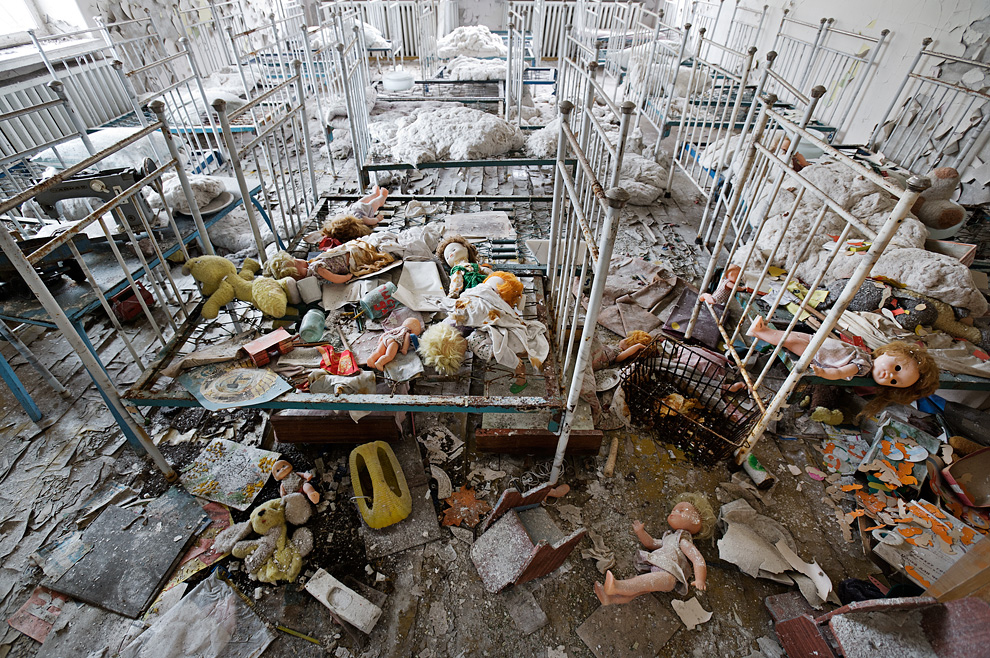
On the day of the disaster, children oblivious to the nuclear accident played in this kindergarten in Pripyat, the reactor’s company town. The following day they were evacuated, leaving behind everything—even their treasured dolls and toys. Pripyat, Ukraine, 2005
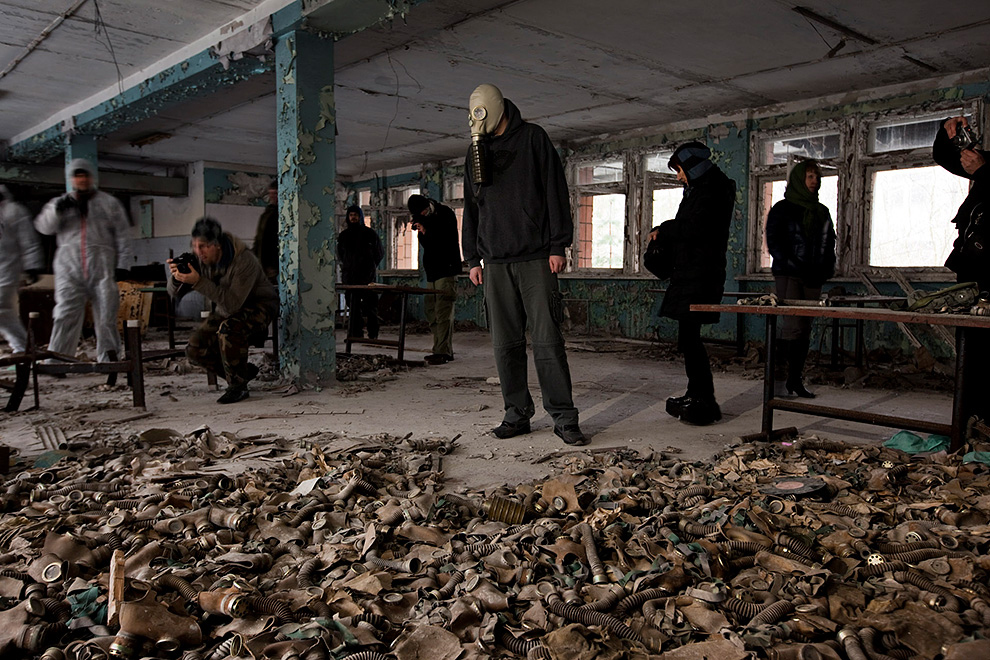
n 2011, the Ukrainian government officially legalized tourism in the Exclusion Zone. In Pripyat, visitors get to wander through the debris-strewn corridors and empty classrooms of a school. Hundreds of discarded gas masks litter the floor of the canteen. One tourist brought his own gas mask—not to protect himself from the radiation but simply for photographs and giggles. Pripyat, Ukraine, 2011

Suffering from thyroid cancer, Oleg Shapiro, 54, and Dima Bogdanovich, 13, receive care at a thyroid hospital in Minsk, where surgery is performed daily. As a liquidator, Oleg was exposed to extreme levels of radiation. This was his third thyroid operation. Dima's mother claims that Chernobyl’s nuclear fallout is responsible for her son’s cancer, but his doctors are more cautious; Belarusian officials are often instructed to downplay the severity of the radiation. Minsk, Belarus, 2005
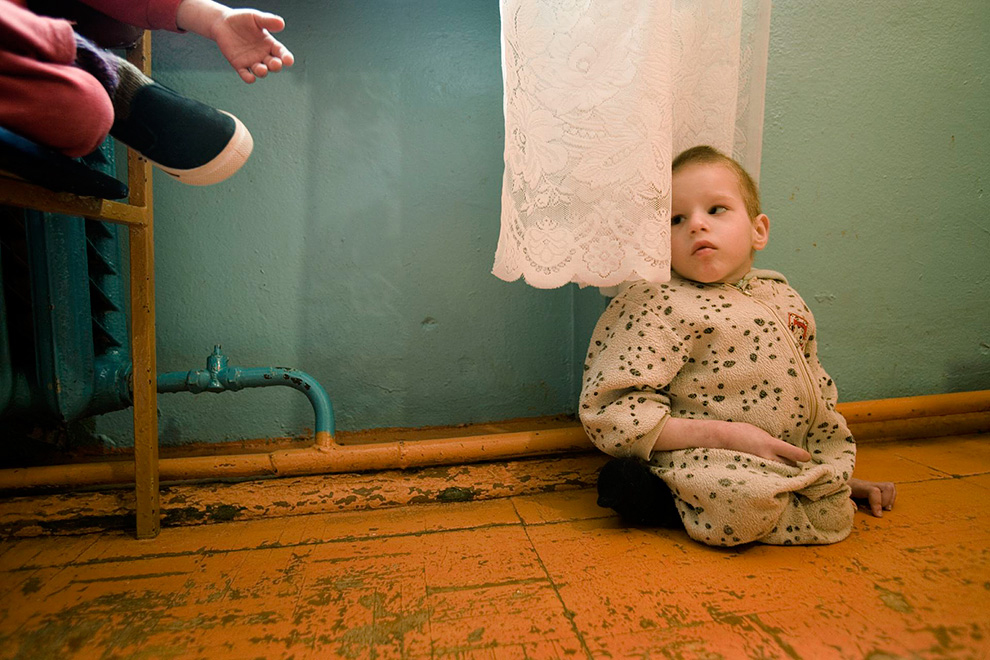
Severely physically and mentally handicapped, 5-year-old Igor was given up by his parents and now lives at a children’s mental asylum, which cares for 150 abandoned and orphaned children with disabilities. It is one of several such facilities in rural southern Belarus receiving support from Chernobyl Children International, an aid organization established by Adi Roche in 1991 in the aftermath of the world’s worst nuclear disaster. Vesnova, Belarus, 2005

ONE OF THE SADDEST PICTURES I HAVE EVER SEEN
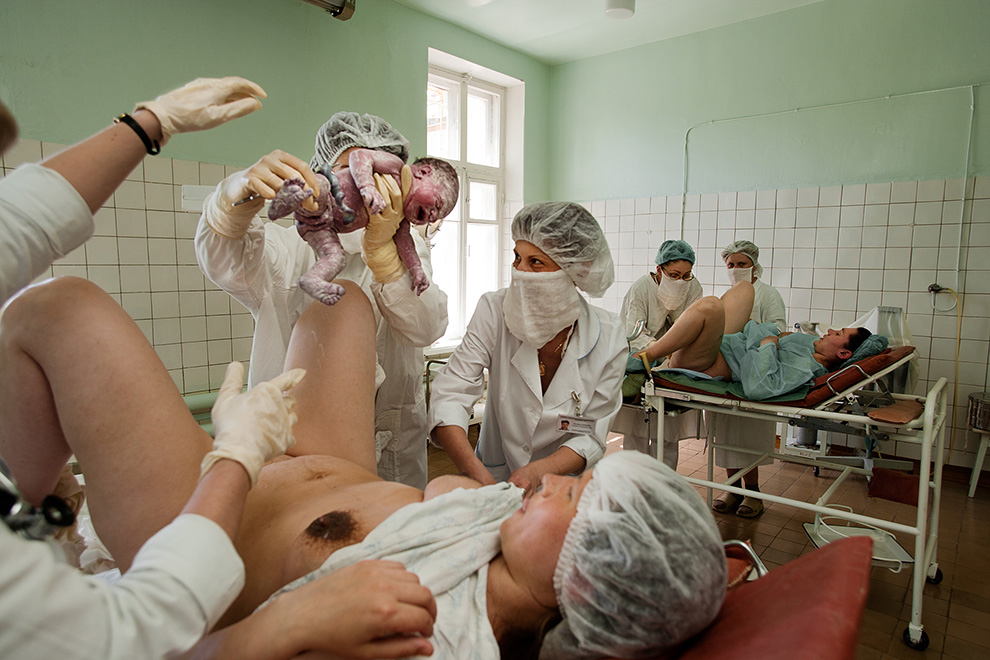
In the days, weeks and months after the Chernobyl accident, strong winds pushed the radiation released by the explosion northwest into the Gomel region of Belarus, contaminating thousands of square kilometers with the radioactive fallout. Today, girls born around the time of the accident are having children of their own. Many find themselves anxious about the contamination and what it might have done to their reproductive organs and genes. Gomel, Belarus, 2005
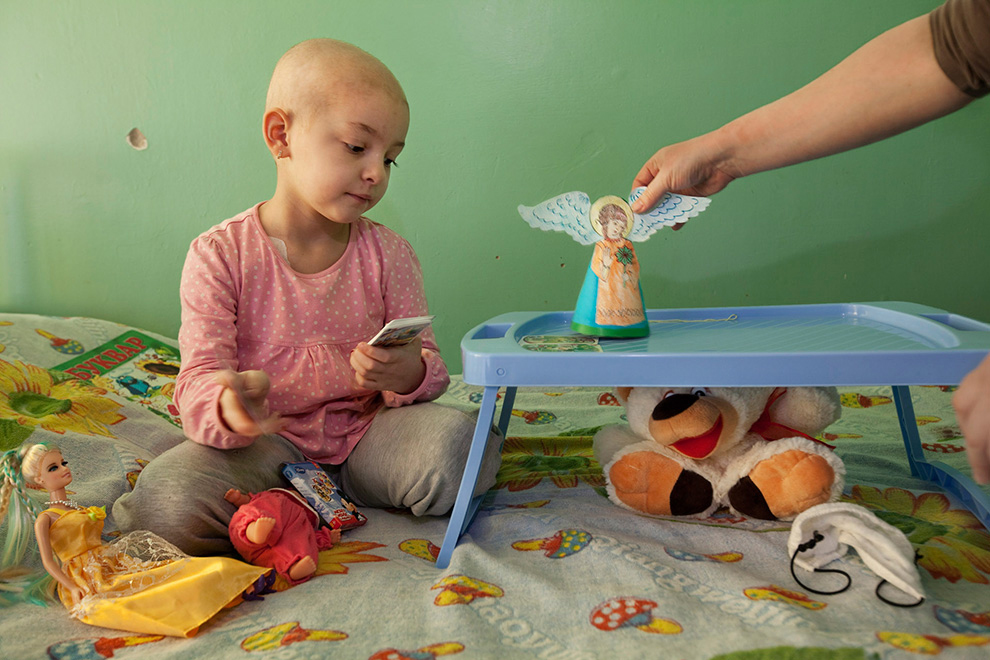
Only 5 years old and suffering from leukemia, Veronika Chechet is hospitalized at the Center for Radiation Medicine in Kiev. Her mother, Yelena Medeyeva, 29, was born four years before the Chernobyl accident in nearby Chernigov, a city heavily affected by nuclear fallout. According to doctors at the hospital, many patients’ conditions are a direct result of the radioactivity released after the accident. Kiev, Ukraine, 2011
